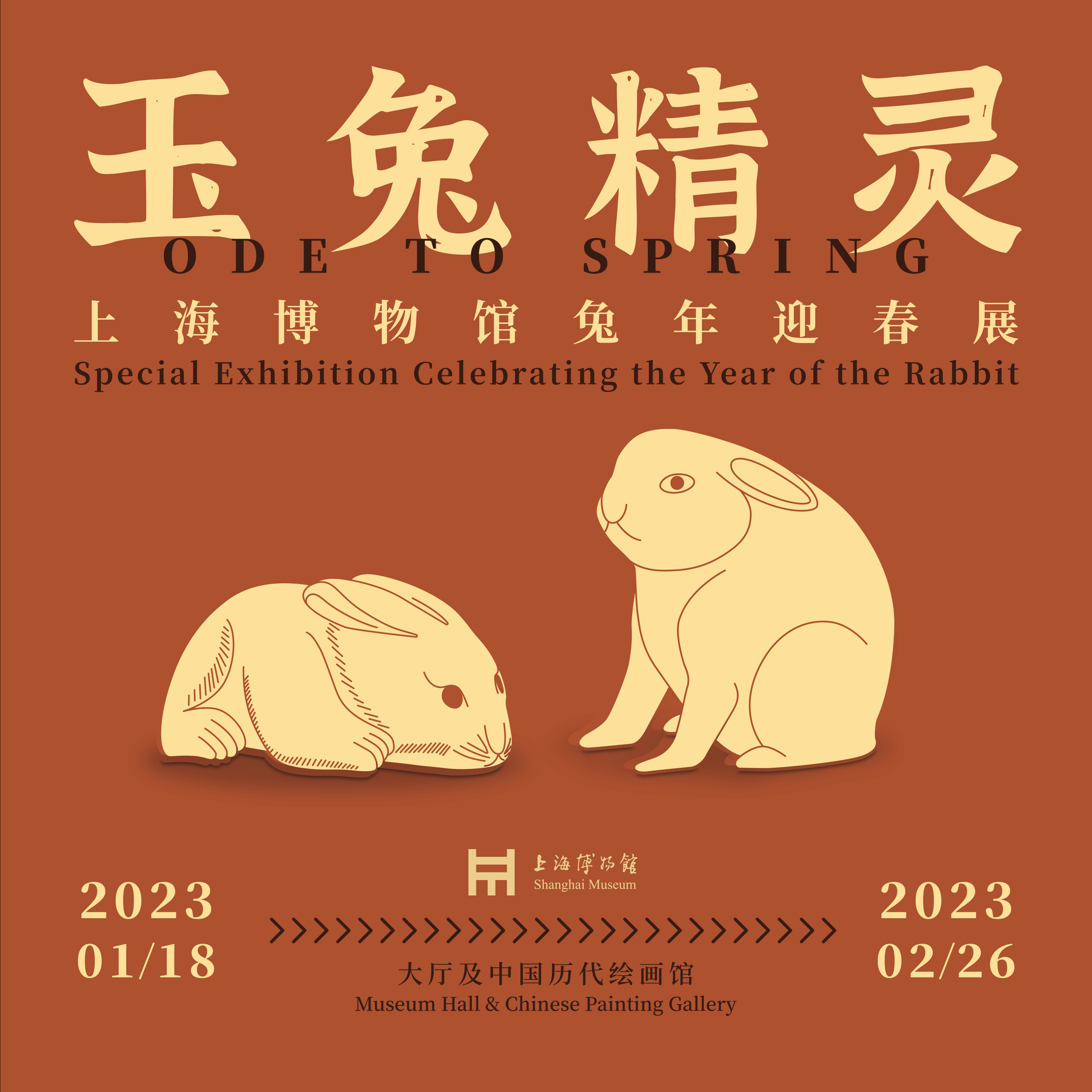前言
癸卯新春至,玉兔来人间。兔子灵动可爱,有繁衍不息、福寿康宁的美好寓意。它数量多、分布广,在古代是食物来源之一。《诗经》和《礼记》中曾提到捕兔网(兔罝jū)、兔酱(兔醢hǎi)、兔羹等捕食之法,还记载兔被称作“明视”,是宗庙祭品之一。
兔子的文化内涵极为丰富。我国古代的兔子都是野兔,它们擅长奔跑,不受拘束,矫健的身姿见于帛画、画像石和壁画,连宝马神骏都要取名“飞兔”“赤兔”。另一方面,兔子杂糅了神话、道教和佛教等因素,经由西王母和嫦娥奔月传说,成为了天宫使者,能够捣长生不老之药,象征着永生,进一步也成为月亮的别称。
“群诗名貌极豪纵,尔兔有意果谁识?”小小的兔子,唐宋大文豪韩愈和欧阳修都要为其作传赋诗,用来隐喻手中之毛笔、人生之际遇,乃至文学之主张。我们也试图通过此次展览的七件兔形象文物,展现从西周到清代,从南到北,人们对兔子长久的观察与喜爱。展出的文物既有上海博物馆馆藏,也有远道而来的山西博物院和衢州市博物馆借展品,品类多样、造型丰富,其中水晶兔发现自上海松江圆应塔地宫。希望这些惟妙惟肖的 “兔精灵”,能够为观众朋友们带来新年的跃动之喜!
上海博物馆馆长
褚晓波
INTRODUCTION
The upcoming Chinese New Year is the Year of the Rabbit. The adorable and lively rabbit is a treasured emblem of fertility, longevity, and prosperity. To be precise, in ancient China, there existed only one genus of the Leporidae family—the Lepus, often referred to as hare. Given its large number and wide distribution, the hare was used as a food source. Several classic texts discussed the concepts of hare net traps and hare recipes, such as the Book of Songs (Shijing) and the Book of Rites (Liji). The hare was also served as an animal sacrifice for ancestral temples.
Hares have exceptionally rich symbolic meanings. It is a born runner and enjoys unfettered freedom. Its great athleticism, therefore, is often captured in the silk paintings, pictorial stones and murals. Even the legendary steeds were named ‘Flying Hare’ and ‘Red Hare’. Incorporated into the tenets of Taoism and Buddhism and legends of Queen Mother of the West and Chang’e the Goddess of the moon, the hare has also been recognised as the messenger of the heavenly palace and the maker of the immortality elixir. The term ‘precious hare’ (Yutu) has subsequently become an alternative name for the moon.
“With all great verses extolling the hare, which could tell what it truly thinks?” The celebrated literary giants Han Yu and Ouyang Xiu in the Tang and Song dynasties metaphorically linked the hare to the writing brush, their life trajectories, and their literary pursuits. We would like to follow the trend to eulogise this little creature by exhibiting seven pieces of hare-related artworks, demonstrating people’s long-lasting observations and fondness of it. We are displaying collections from not only the Shanghai Museum, but also from the Shanxi Museum and the Quzhou museum. Interestingly, the crystal hare figurine was unearthed from the underground relic-chamber of the Yuanying Pagoda in Shanghai. We sincerely hope these lifelike ‘hare spirits’ can inject energy and life into the new year!
Director of the Shanghai Museum
CHU Xiaobo
